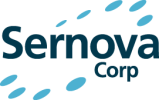(TheNewswire)





Prescient Reports Edition 01-21 V192
https://www.prescientreports.com/2020-saw-the-emergence-of-significant-medical-advancements/
Biotech Section
Author: R. Hutchison
The POINT
2020 -- The Emergence of Significant Scientific Medical Advances
Where to Watch Next – Regenerative Medicine

Click Image To View Full Size
2020 is a year that many would like to forget, but amidst a pandemic, the world saw some amazing scientific medical advances. A case in point, Messenger Ribonucleic Acid ( mRNA), a well-studied technology that was thought of as a dismissed idea is now a leading technology in the COVID-19 vaccine race 1 . It was due to the pandemic that a little-known German Biotech working in the mRNA space called BioNTech burst onto the market. Though there had been a first FDA approval of an RNA drug granted to Alnylam Pharmaceuticals as recently as August 2018 it was for an ultra-rare disease and didn’t get much attention.
The real news in this space came when BioNTech and Pfizer announced they had a vaccine for COVID-19 that promises an amazing 95% efficacy against the devastating disease. Achieving this rate of effectiveness is unheard of in the vaccine space, but using this almost forgotten technology, coming out of a little-known mRNA company, not only achieved it, but did so in under a year! It should be noted that BioNTech has been around since 2008, so although they accomplished the development of a COVID-19 vaccine in under a year, the company has 12 plus years of research behind it, not to mention the years of research performed by the scientists who formed BioNTech.
In 2018 there were only a handful of companies in the RNA space, essentially known only to those of us who have studied the field. It is remarkable that in just 2 years this technology has come so far so quickly. There is no question that commercialization of a mRNA drug was significantly advanced due to the pandemic. The proverb, “ Necessity is the mother of invention ” seems appropriate. As one who has studied this market, worked in and headed biotech companies for 20 years, I can confidently say that this scientific event is transformational for the biotech sector. And for companies that have been working for years on new technologies, this market transmutation will advance medicine dramatically in the years ahead. One such technology, very much like RNA that has had many failures, is in my opinion poised to see these types of results is that of Regenerative Medicine .
Regenerative Medicine (“RM”) is the branch of medicine that develops methods to regrow, repair or replace damaged cells, organs or tissues. Regenerative Medicine includes the generation and use of therapeutic stem cells, tissue engineering and production of artificial organs – so rather than simply treating the disease, it proposes a cure . There are a number of big players in this sector and Jr. biotech’s that are focused on very specific diseases. As well, there has been some newcomers to RM that have entered this sector at a great time, and in doing so realized corporate evaluations that exceeded the norm. One notable new entry in the RM space that “timed it right” is Sigilon Therapeutics. Sigilon was recently taken public on NASDAQ in December 2020, by three notable firms; Morgan Stanley, Jefferies and Barclays. These top tier firms rallied Sigilon to an astonishing $1.4bln market cap in one month on no clinical data.
My discussions with biotech funds and analysts, has revealed that there is a very solid reason for this. You simply need to look at the example I provided above with respect to BioNTech; a fringe once-dismissed technology that albeit underwent years of research, went in under a year from unknown to what some might call “Rockstar Status”. This sent not a ripple, but a tsunami through the biotech financial market and the regulatory bodies with “ a call to embrace new scientific medical advancements. ” Financial institutions and investment banks who may have been hesitant to reach out to sectors that don’t fit the traditional model, are now rethinking their approach. RM fits right into this rethinking or what I will call “mental space” that is gaining attention, and Sigilon is a prime example. Although there are a number of notable names who have RM programs that are for the most part internally funded, there are a number of smaller, lesser-known biotech’s that are very focused on specific diseases where RM can make a huge difference to large population segments. Some of these biotech’s could very well be the BioNTech of the future.
One I found is Sernova Corp . They date back to the mid 2000’s, so as a team they have arguably well over 15 plus years focused on RM technology. As a very focused biotech that knew they had a long path to follow, they have stuck with it and the results they have attained so far are not fairly represented in their current market cap. They have a high value lead program on Diabetes, that has shown tremendous results all the way through and into to a Phase I/II study currently occurring at the University of Chicago for which positive interim safety and efficacy data has recently been released as presented by the principal investigator at the 2021 ASTS (American Society for Transplant Surgeons) Winter Symposium on January 15, 2021. In this disease indication and using RM, Sernova is on the low end of the scale with respect to its’ market cap verses their main competitors whom sport far less results and little to no clinical data. So, one would ask why the huge spread on market cap? (Sigilon US$1.4bln vs. Sernova US$307M). The reason is that Sernova’s market cap is based on a share price on the Canadian TSX Venture exchange. Traditionally this exchange was, and remains, largely resource based with some technology companies, but very few biotech’s, and attracting a sophisticated biotech investor base is very difficult.
The ability to attract US based individual investors is limited on this exchange and US institutional groups often cannot participate due to their firms’ charters. Not to mention that the US has a plethora of biotech’s to invest in. So, one might ask why am I and Prescient Reports are so bullish on this company? Consider these three very strong markers; 1) Sernova’s data is solid and on track. 2) FDA guidance along the way has been very positive. 3) They have executed an ongoing successful Phase I/II safety/efficacy study of their cell pouch technology with therapeutic cells which is demonstrating clinical benefit in patients, a critical step in making RM for this disease a reality. In looking at comparables in this space, again, I sight Sigilon. This US based RM player just recently hit the NASDAQ public market in December 2020. They’ve yet to start a clinical study and have only recently started to enroll patients in a Phase 1 on one indication. Yet the team gained the interest of some US biotech bankers, led by Morgan Stanley, that propelled this new entry to a market cap of US$1.42bln 2 in less than a month! Sernova tracks very well with Sigilon, but comes in at a market cap of CDN$149M. Sernova is clearly a clinical stage biotech with very positive data that I believe will position them as a leader in the RM space.
With the likes of Morgan Stanley, Jefferies, Barclays and other top banking firms, backing a RM biotech who has yet to have clinical data and to drive them to a US$1.4bln market cap, indicates that those firms’ analysts are looking to the RM space to make major moves thru 2021 and beyond. One ponders, that if a relatively unknown German biotech such as BioNTech can achieve the kind of recognition they did, does the data on Canada’s Sernova suggest that they may be poised to do the same within the RM space?
Disclaimer: At the time this was written and posted, the author held no securities in Sernova. Nor did Sernova pay any consideration for this Op-Ed. This article is the solely the opinion of the writer and are not intended to malign any religion, ethnic group, club, organization, company, individual or anyone or anything.
1 STAT @damiangarde and JONATHAN SALTZMAN — BOSTON GLOBE NOVEMBER 10, 2020
2 Stockwatch as at January 4 th 2021
Copyright (c) 2021 TheNewswire - All rights reserved.